Witches Of Salem
Bridget Bishop – The Scarlet Orchard
Salem Town, 1692
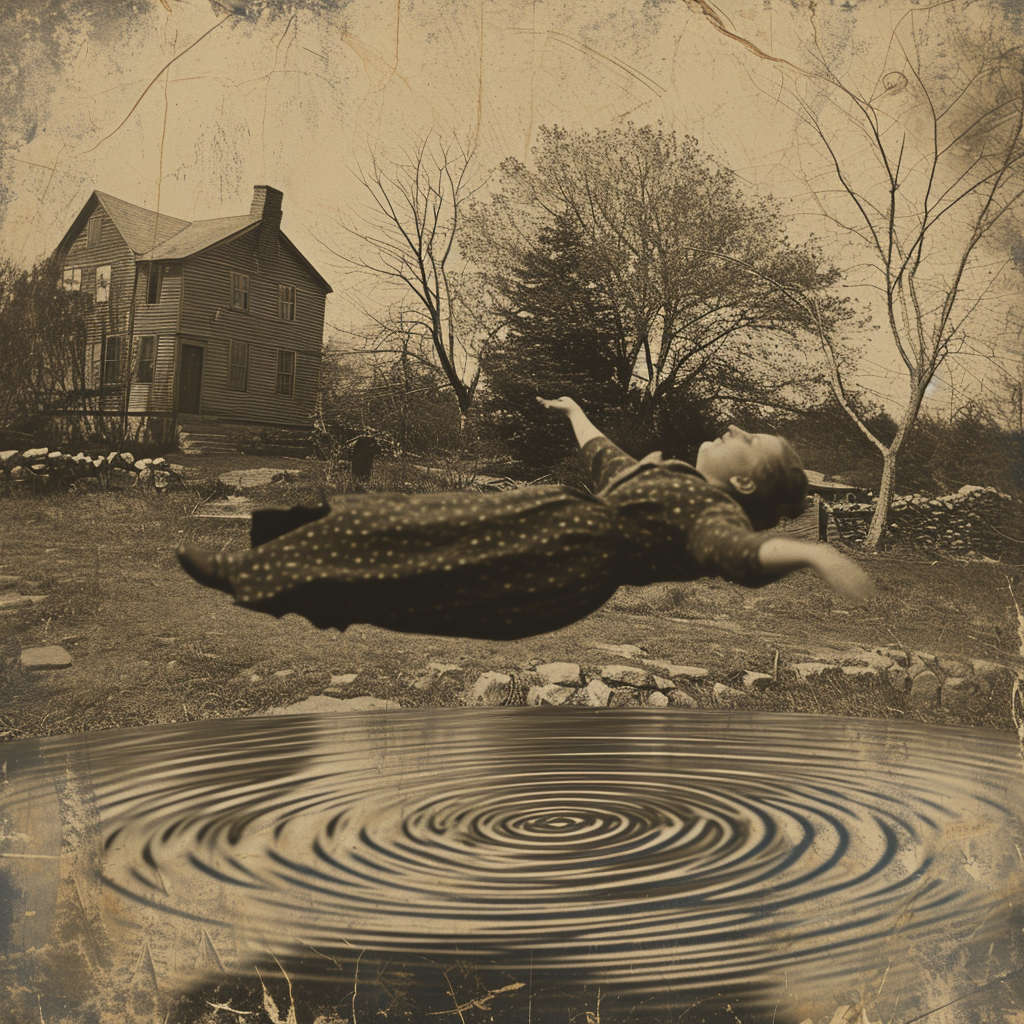
Bridget kept her tavern bright and colorful as her gowns — red silk in a world that loved gray. She brewed cider that burned in the throat and laughter that burned in the hearts of men. Her orchard on the road to Beverly was said to whisper at dusk: women’s voices, gossiping through the apple blossoms.
When the magistrates came, they didn’t see fruit or ferment — they saw temptation. They tore apart her cider barrels, said they found poppets in the rafters, and called it proof. Yet the truth is simpler: she was among the first to be accused because she thrived.
A widow with ruddy cheeks, and no master above her.
Her orchard died within a season of her hanging. No apples bore fruit until thirty years later — a seed her granddaughter planted and said “Grow for those who could not.”
⸸─────☽༓☾─────⸸
Mercy Ward and Patience Blythe
The Herb and the Stone
Salem Village, 1691–1692
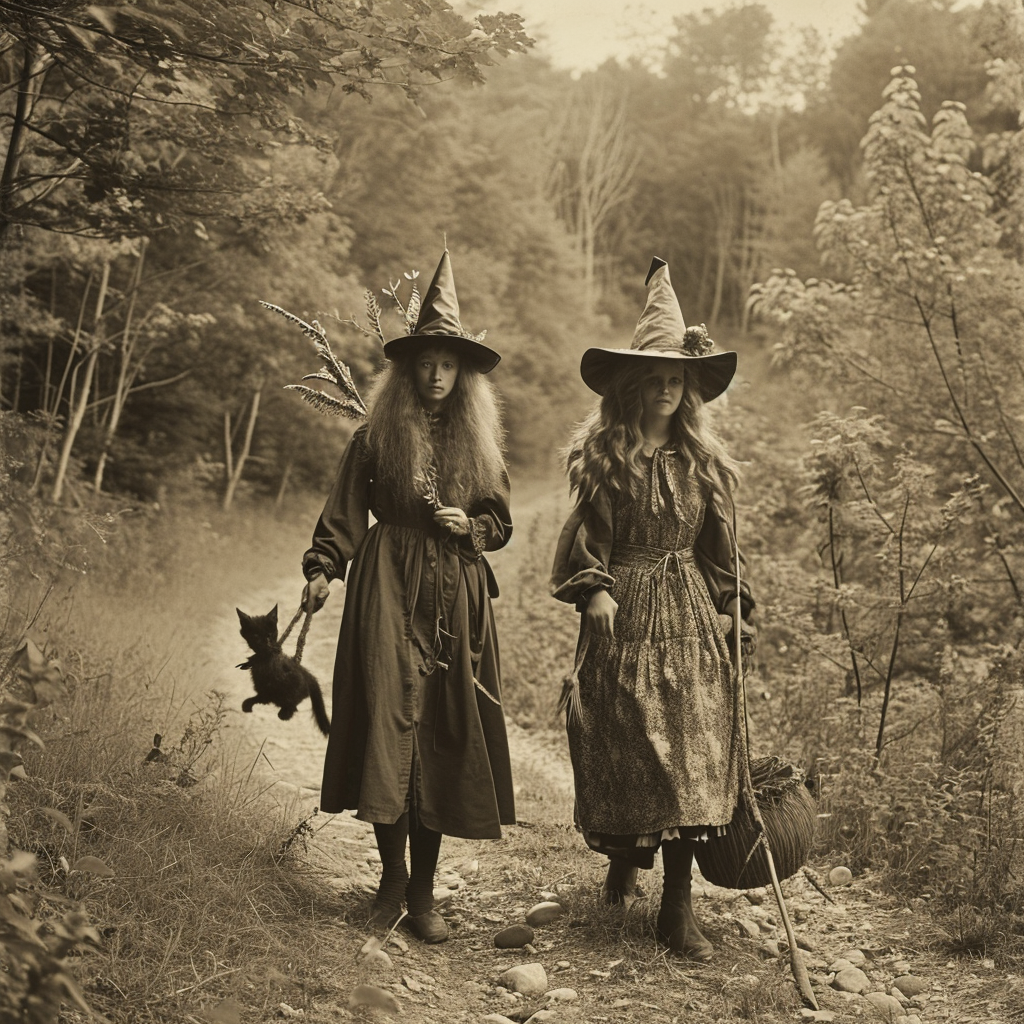
Mercy knew the pulse of every leaf. Patience knew the weight of every stone.
Together, they made a language: from what sprung forth and from what remained. The pair were entwined lovers and that, as much as the sorcery, was the villagers’ scorn.
Mercy mixed her elements into patterned fabric, Patience forged the pins and the needles — both women crafting what the other required. Their small cottage by Hathorne’s meadow was filled with color, smoke, and laughter that smelled of mint and mandrake root.
When the first accusations came, they weren’t named.
But when Mercy healed a magistrate’s wife, and Patience refused to apologize for the herbs that worked better than prayer, the whispers started.
The pair vanished before the trials began — gone north toward Marblehead, leaving only a single pressed sprig of wolfsbane nailed to their door. It bloomed in midwinter.
⸸─────☽༓☾─────⸸
Goody Hobbs, Deliverance Dane, and Abigail Faulkner
The Thread, the Well, and the Word
Salem Town, Winter 1693
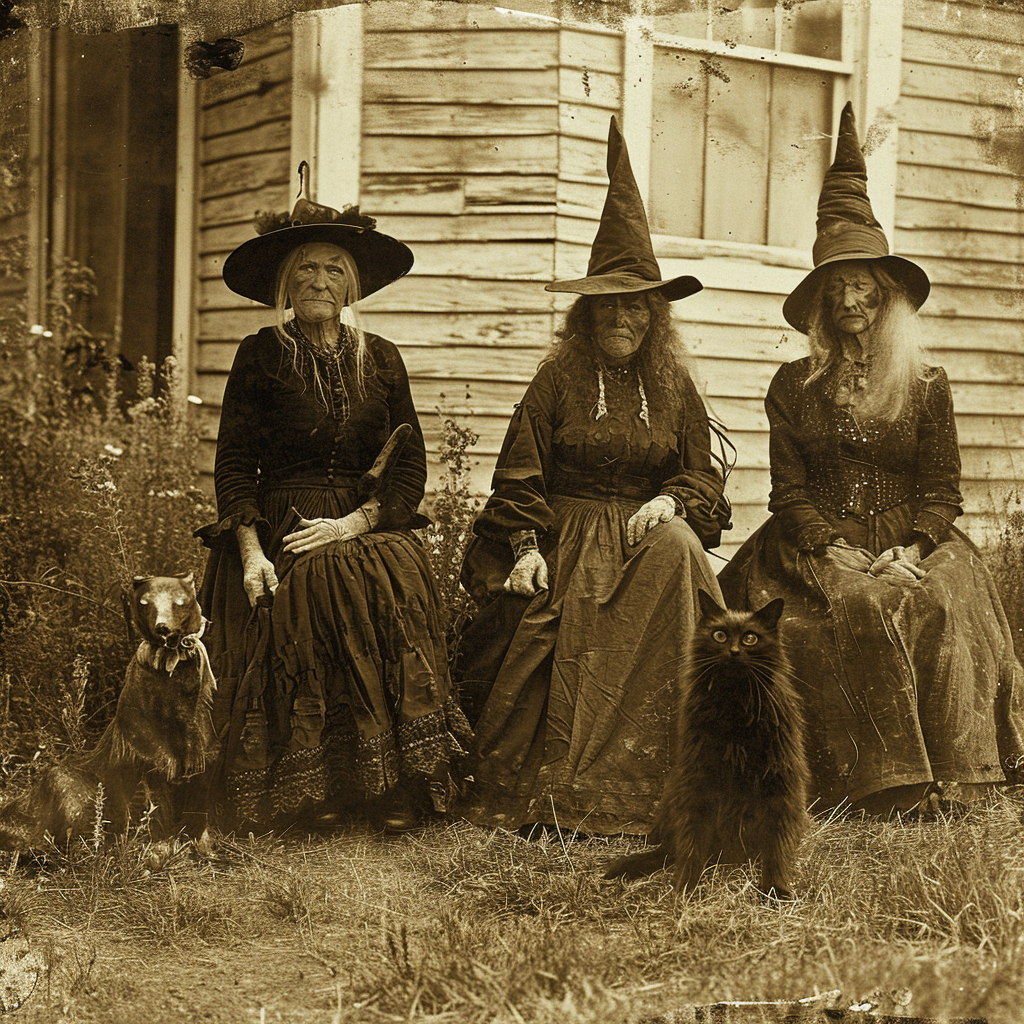
They met after the executions — widowed, worn, and wordless.
Goody Hobbs could sew so finely her stitches disappeared; she mended the gallows rope that broke during Bridget Bishop’s hanging.
Deliverance Dane dowsed wells that ran clear where others soured — but she claimed the water spoke to her and told her of “that which was pure“.
Abigail Faulkner had been condemned, then pardoned; her sermons were banned, yet her whispers spread like wind through reeds.
They called themselves “The Mournebound” because “it kept the villagers at distance.” But the villagers noticed: where they walked, milk did not curdle. Children slept through the night. The plague of smallpox stopped at their fences. But in the morning, the villager’s house cats would occasionally be found missing.
In the end, they were not tried — only watched.
One by one, they left for Maine, where the forests were thick enough to hide their words. A letter from Dane survives, unsigned, found in a barn wall:
“We have found a place where no one calls us witches,
only women who remember not to make the same mistake twice.”⸸─────☽༓☾─────⸸
The Coven: The Circle of Quiet Hands The Ones Who Remain
Topsfield Woods, 1695
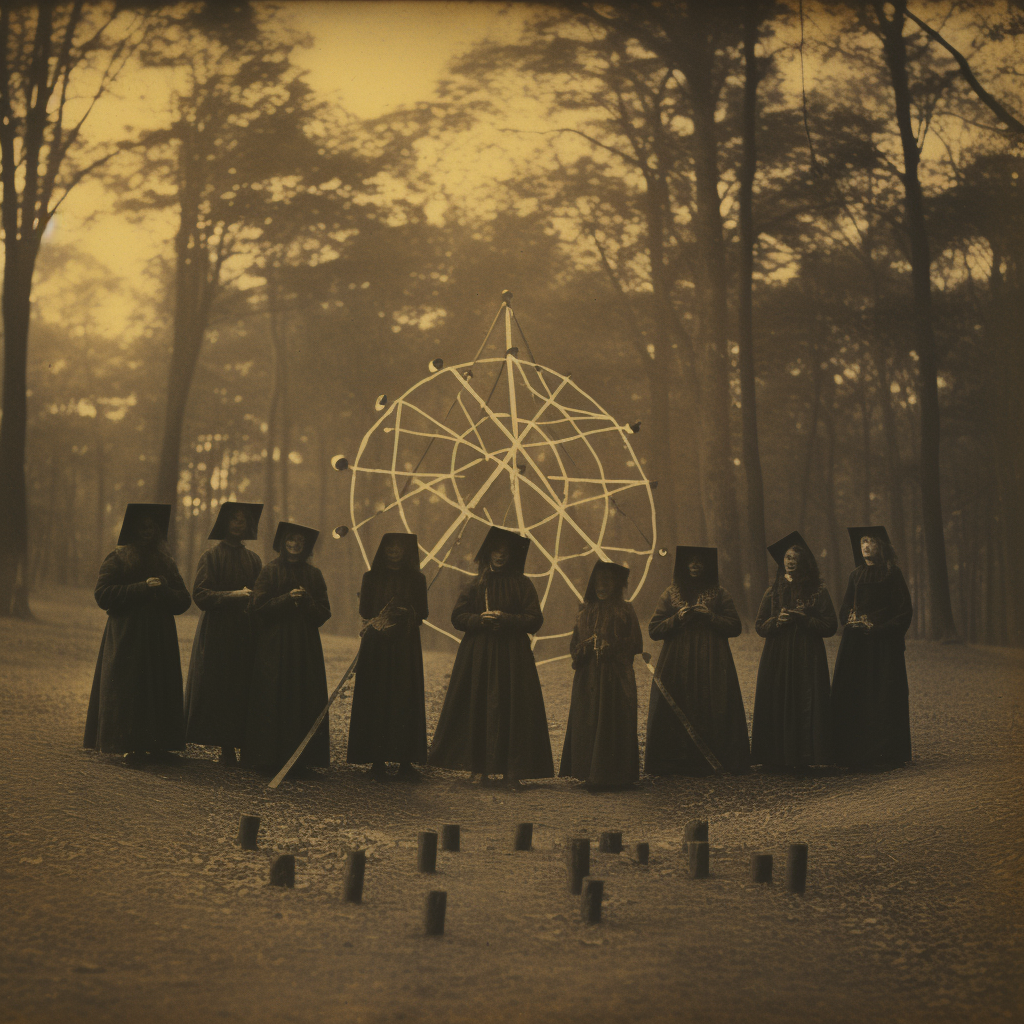
Nine women, all survivors of the Salem purge — widows, healers, midwives, the silent and the accused-but-spared. They gathered under the oak where Mary Eastey once prayed.
No Latin. No fire. No icons.
Only silence, shared, as devotion.
They placed their palms on the cold ground and vowed: never again by word, only by deed.
When one of them died, the others planted herbs over her grave — not for memory, but for use.
That patch of earth, hidden behind the Nurse Homestead, was found in the 1830s: layered roots of rue, sage, foxglove, and bone.
The historian who unearthed it wrote:
“There is no record of a coven in Salem.
Only the earth itself remembers their hands.”
⸸─────☽༓☾─────⸸
The Midwives Covenant
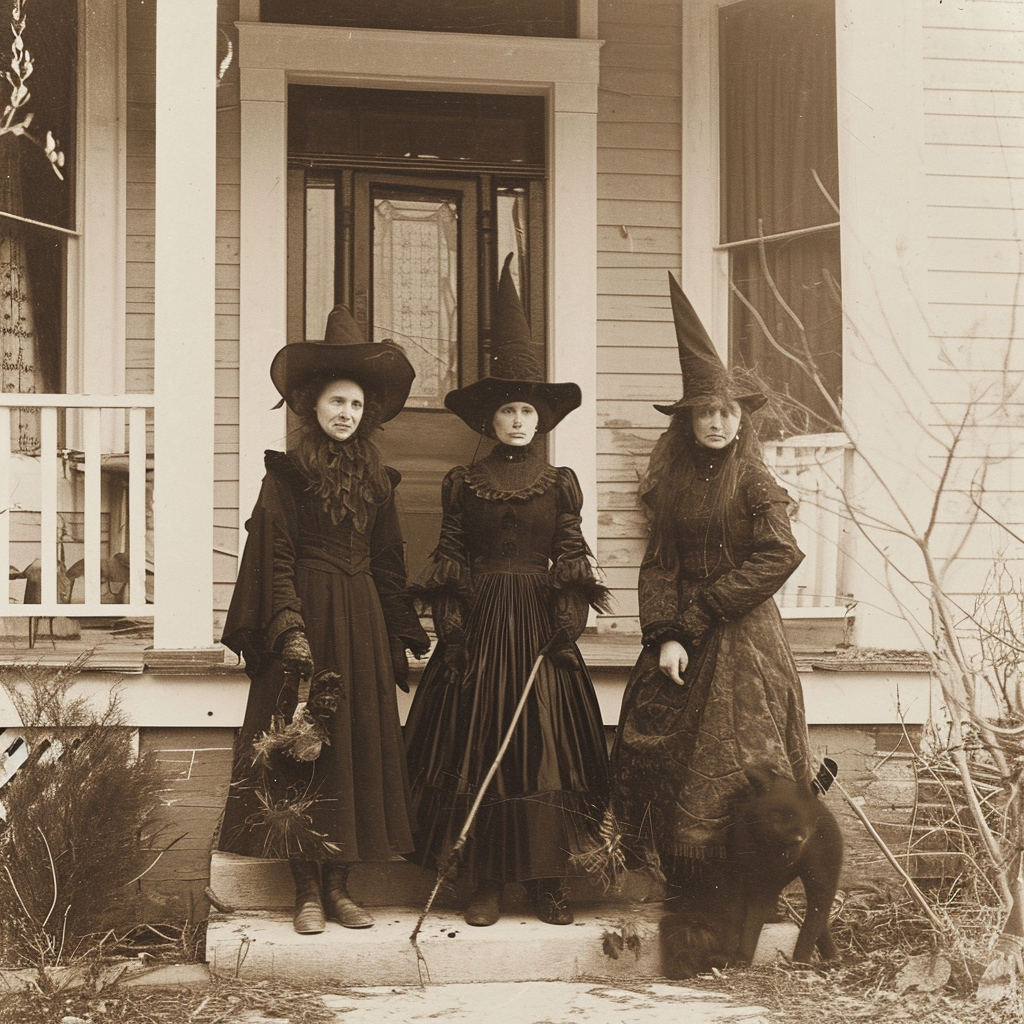
Mary Eastey, Sarah Cloyce, and Rebecca Nurse
Sisters of mercy and of blood. Their tools were linen, tallow, and time. In their hands, childbirth was neither miracle nor sin. Their midwifery was the regulation of breath, the reading of pulse, the calm negotiation between body and spirit.
The men called it witchcraft when the mothers they tended survived too often, as if salvation belonged only to scripture.
Their art was bodily literacy. They negotiated the womb like a map, the herbs like scripture. The records say “they trafficked in the Devil’s Children”;
The historian reads instead a quiet defiance—women preserving knowledge the Church refused to sanctify. To deliver life was the their preserved alchemy, but the three took such knowledge with them even to the unthinkable fiery death at the hand of men they would no longer be forced to serve.
⸸─────☽༓☾─────⸸
Charity Wardwell, Elspeth Glover, and Faith Redd
The Needle, the Tongue, and the Book
Salem Town, 1682–1694
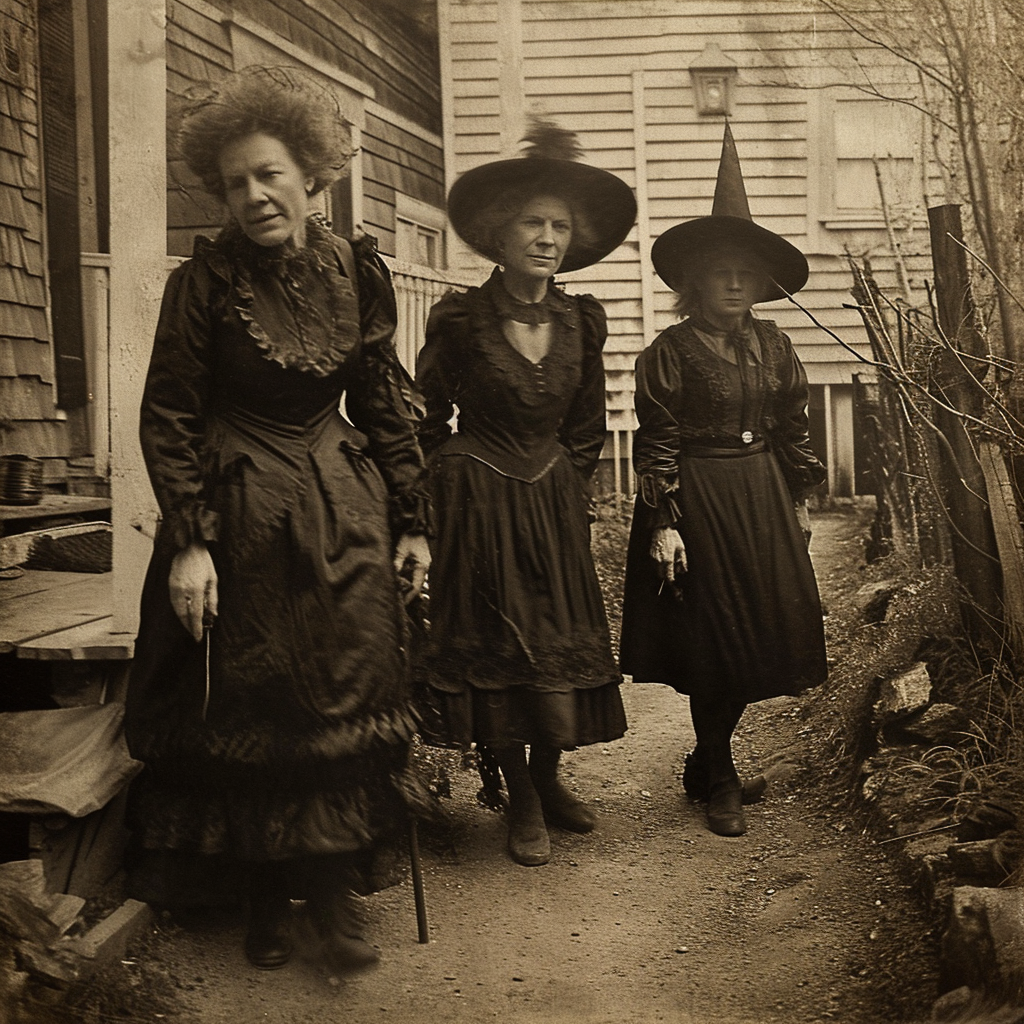
Charity Wardwell stitched symbols into collars — tiny, invisible runes hidden in the hem, meant to protect sailors from drowning.
Elspeth Glover baked bread that made men speak truth; her missing husband swore it loosened tongues better than drink.
Faith Redd, daughter of the executed Wilmot Redd of Marblehead, copied banned psalms by moonlight into a book of linen pages and shared with trusted women, those of whom, for one reason or another, fell beyond expected repute. Those who’s fate had already been sealed by the Church.
Like the other women of the circle, those who belonged nowhere else.
They met in the parlor of the Widow Stone’s house, by then a place forgiven the horrors foist upon it. There, they spoke of replacement — how to mend what the trials tore. They believed language itself could be rewoven.
Each had lost someone. Charity’s son, gone to the sea, Elspeth’s brother, hanged for “unnatural laughter”, and Faith’s mother, also silenced by the rope.
They bound their griefs into handiwork — three crafts aligned: stitch, bread, scripture. Each woman’s tool became her deflection and defense.
When a magistrate’s wife was heard reciting Faith’s banned psalms in her sleep, the town called it witchcraft.
Charity’s embroidered collars were burned. Elspeth’s oven was disassembled and scattered in the forest. The Book That Refused To Burn was eventually tossed at sea, the vessel that carried it was lost on her return trip to port.
On stormy nights, fishermen still claim their shirts dry faster than they should — threadwork tight as prayer.
A few bakers claim that when following Elspeth’s recipe, the inexplicable words in nomine memoria appear in their dough, faint as flour dust.
(In the name of memory.)
⸸─────☽༓☾─────⸸
Prudence Gage and Widow Ester Cole
The Salt and the Silence
Ipswich Road, Winter 1693
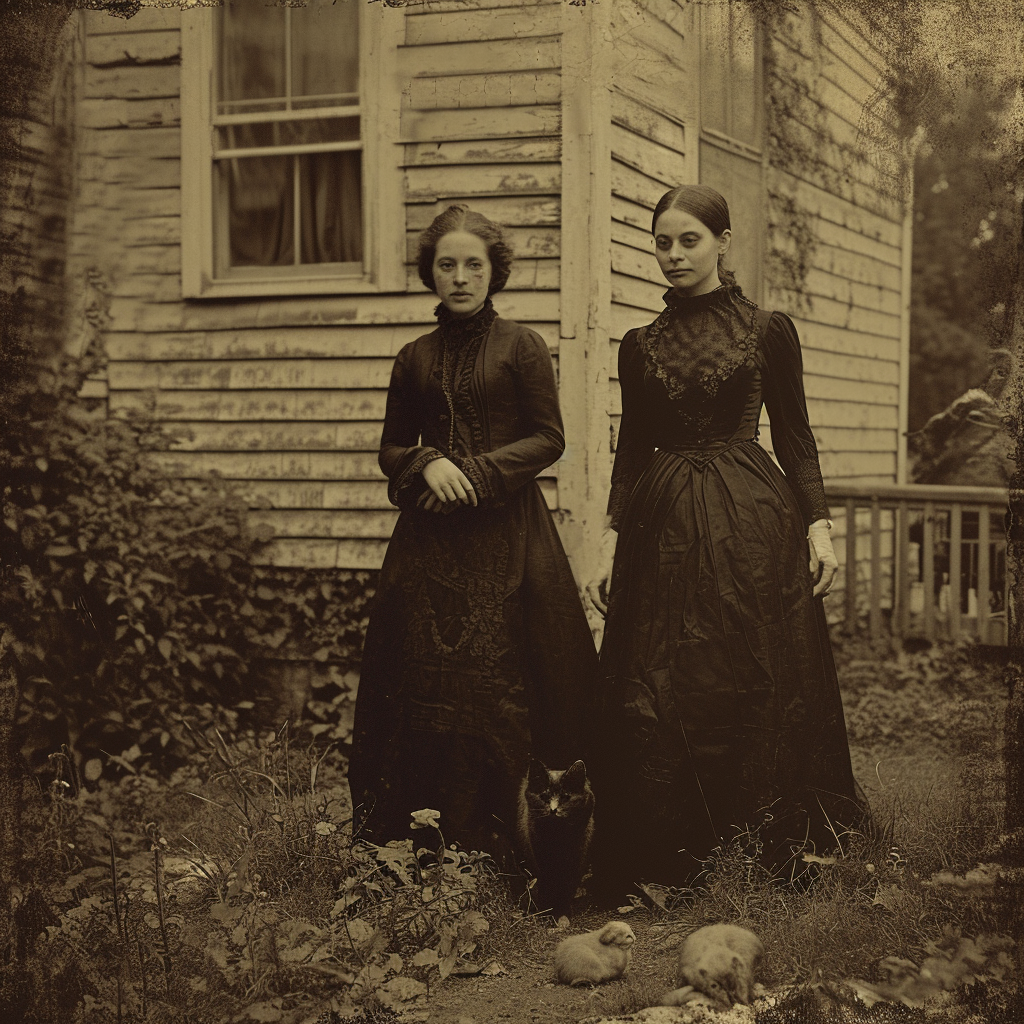
They met by accident, if such things exist.
Prudence was the daughter of a fisherman lost at sea — she walked the road each dusk, scattering salt to keep ghosts from following her home.
Ester Cole, twice widowed, was known to sit on her porch long after dark, sewing nothing, just moving the needle through air.
When Prudence dropped her basket one night, Ester helped her gather the salt, one grain at a time. Neither spoke — and something passed between them: a recognition, a quiet understanding, a pulse of mutual exile.
They began meeting weekly. No one called it witchcraft, because no one saw them do anything. But milk soured in their absence. Bells rang when they approached the meetinghouse. One night a farmer swore he saw them walking side by side through the fog — though both had been buried the week before.
Their graves, unmarked, lie near the bend where Ipswich Road meets the marsh.
Locals still sprinkle salt there before crossing, and sometimes find neat lines of stitches in the dust — thread with no cloth, like a promise still held.
⸸─────☽༓☾─────⸸
The Circle Restored
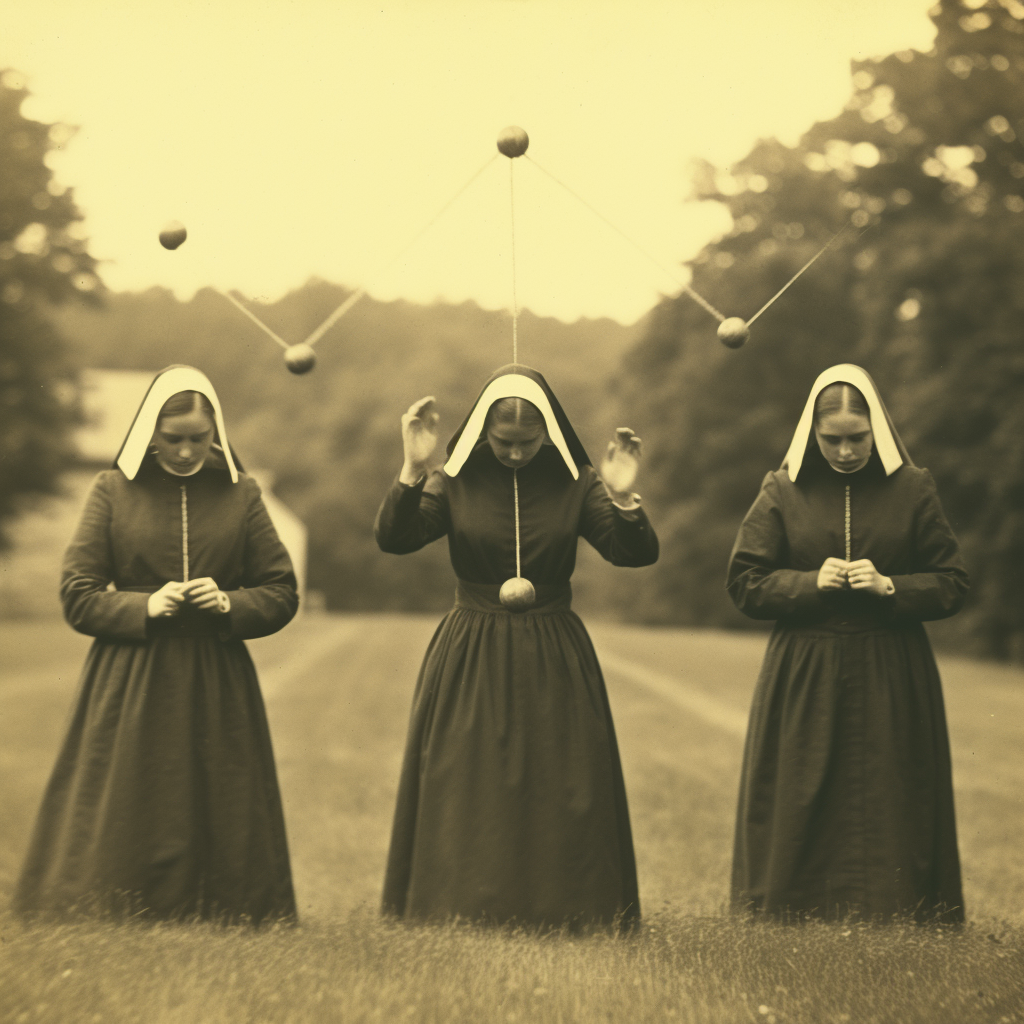
Sarah Eastey, Mary Bradbury, and Dorcas Hoar (after The Pardon)
Long after the executions, the surviving families met quietly to exchange psalters and keepsakes. They whispered the lost names, hummed the forbidden melodies. In their hands the craft transmuted back into a lost art: embroidered flowers, carved spoons, herbal sachets for the sick.
Historians view this as the first post-Salem folk revival—a reconstruction of feminine culture under the guise of domestic craft. Each object preserved what public life denied: continuity. Their forgiveness was not given by the state but stitched into every gift they made.
⸸─────☽༓☾─────⸸
The Progeny
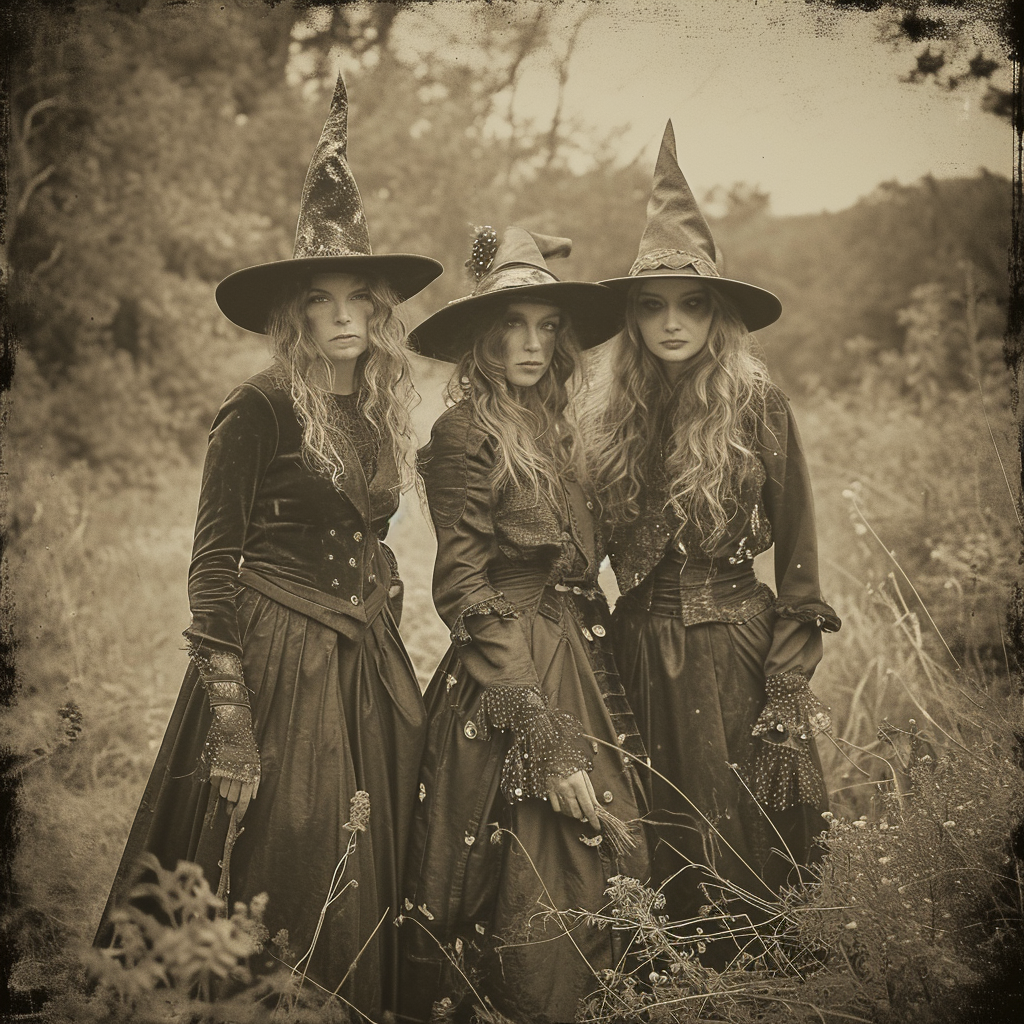
They were healers, scientists, artisans, poets—erased because they created outside the authorized frame.
The historian, sifting through parchment and ash, concludes that witchcraft was never about demons; it was about unauthorized knowledge.
Their art persists in medicine, midwifery, textiles, song, chemistry, and psychology.
Every woman who practices care without permission, every artist who works in the borderlands of reason, is their descendant.
Salem was not the end of their story—it was the museum fire that made the glass glow.
⸸─────☽༓☾─────⸸⸸─────☽༓☾─────⸸⸸─────☽༓☾─────⸸


